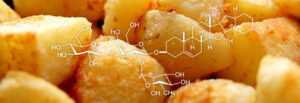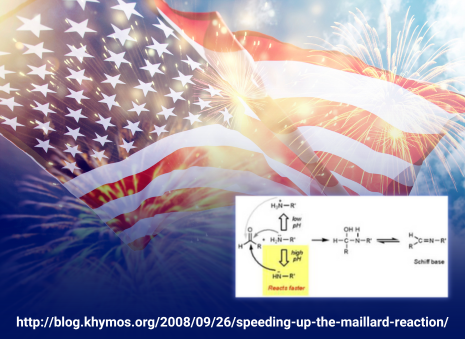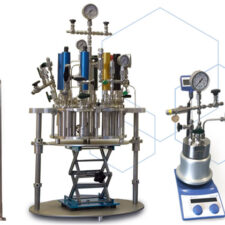As the aroma of sizzling burgers and grilled vegetables fills the air this Independence Day, you can thank not just your barbecue skills – but the Maillard reaction – for those rich, complex flavors and mouth-watering browning. This quintessential chemical reaction is a favourite among chemists and foodies alike, offering a delicious intersection of science and everyday life.

What is the Maillard Reaction?
The Maillard reaction is a form of non-enzymatic browning that occurs when reducing sugars, like glucose, react with amino acids under heat. First described by French chemist Louis-Camille Maillard in 1912, this reaction is responsible for the golden crust on grilled meats, toasted bread, roasted coffee, and even seared tofu.

At its core, the Maillard reaction begins with the nucleophilic attack of the amino group on the carbonyl carbon of the sugar. This forms a Schiff base that rearranges into Amadori compounds, which then undergo a cascade of reactions—producing hundreds of aromatic and flavourful molecules including pyrazines, furans, and aldehydes.
Why does it matter to chemists?
For those of us in the lab, the Maillard reaction is more than a tasty phenomenon. It’s a fantastic example of organic reaction pathways, thermally-driven rearrangements, and structure–flavour relationships. Understanding it helps us unravel pathways of food chemistry, pharmaceutical degradation, and even polymer ageing.
The takeaway
So, while you’re enjoying that perfectly charred hot dog or a crispy corn cob this 4th of July, raise a toast (or a toasted bun) to the Maillard reaction—a wonderful reminder that chemistry doesn’t just live in the lab. Sometimes, it’s right there on your plate.
Happy Independence Day from all of us at Asynt — where we believe great chemistry belongs in every corner of life, not just the fume hood.
If you’d like to catch up with Asynt Inc.’s Rob Maddox either before or after the holiday weekend, you’re welcome to email [email protected] or call 502-593-0726.
Our other food-related chemistry blogs might interest you…
 |
www.asynt.com/blog/the-chemistry-of-doughnuts/ |
 |
www.asynt.com/blog/the-chemistry-of-roast-potatoes/ |
 |
www.asynt.com/blog/guinness-the-worlds-first-nitro-beer/ |








